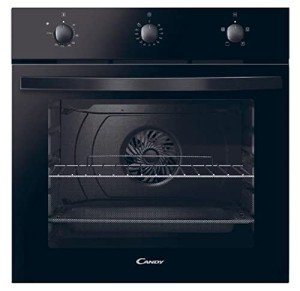
Single Built Under Oven
Add a review FollowOverview
-
Founded Date November 10, 1927
-
Posted Jobs 0
-
Viewed 47
Company Description
11 Ways To Completely Redesign Your Single Built-In Ovens

The Rise of Single Built-In Ovens: A Comprehensive Guide
In today’s modern-day kitchen areas, the option of home appliances plays a critical function in combining functionality with aesthetic appeal. Amongst these home appliances, the single built-in oven has emerged as a preferred amongst homeowners and chefs alike. This short article looks into the features, benefits, and factors to consider associated with single built-in ovens while resolving frequently asked concerns (FAQs).
Understanding Single Built-In Ovens
Single built-in ovens are developed to fit seamlessly within kitchen cabinets. Unlike freestanding ovens, which stand alone and may inhabit more area, built-in ovens are set up directly into the kitchen facilities, using a streamlined, integrated look. They can operate individually or in combination with a cooktop, making the most of the effectiveness and designs of modern-day kitchens.
Functions of Single Built-In Ovens
Single built-in ovens come equipped with a range of ingenious features that boost their performance and user experience. Some typical features consist of:
| Feature | Description |
|---|---|
| Self-Cleaning | A function that cleans up the oven interior at high temperature levels, lowering the requirement for manual scrubbing. |
| Convection Cooking | A fan flows hot air, guaranteeing even cooking and browning of food. |
| Smart Technology | Wi-Fi connectivity that enables control over the oven from smart devices, along with dish assistance and tracking. |
| Numerous Cooking Modes | Alternatives such as baking, broiling, roasting, and barbecuing to match various cooking requirements. |
| Touch Controls | Intuitive touch user interfaces that permit for easy temperature and timer changes. |
| Smooth Design | Visual finishes like stainless Steel ovens steel, black, and custom-made panel-ready choices for a personalized kitchen appearance. |
Advantages of Single Built-In Ovens
- Space-Saving Design: Built-in ovens inhabit less flooring space, making them perfect for compact cooking areas or for property owners desiring to optimize kitchen designs.
- Enhanced Aesthetics: Their integrated style adds to a streamlined appearance, permitting a more harmonious appearance with kitchen cabinetry.
- Improved Functionality: With advanced features like exact temperature controls and numerous cooking modes, built-in ovens supply versatility for numerous culinary jobs.
- Increased Value: Homes equipped with contemporary, high-quality devices like built-in ovens tend to have greater market price.
- Modification: Built-in ovens offer customizable choices, permitting property owners to choose styles that match their kitchen design perfectly.
Considerations When Choosing a Single Built-In Oven
When selecting a single built-in oven, a number of elements must be taken into account to guarantee that it fulfills cooking needs and fits the kitchen style. Below are essential considerations:
-
Size and Capacity:
- Standard dimensions usually range from 24 inches to 30 inches large.
- Think about the internal capacity, measured in cubic feet, depending on the cooking requirements of the family.
-
Fuel Type:
- Built-in ovens can use gas, electric, or dual-fuel options.
- Electric ovens are known for consistency, while gas ovens provide quicker heat modifications.
-
Installation:
- Proper setup is vital for security and performance. Expert setup is recommended, especially for gas ovens.
-
Spending plan:
- Prices can vary commonly based upon brand, functions, and extra technology. Identify a budget plan before shopping.
-
Energy Efficiency:
- Look for ovens with energy rankings to make sure lessened electrical power usage over time.
-
Brand and Warranty:
- Choose reputable brand names understood for resilience and client service. Also, think about guarantee options.
FAQ About Single Built-In Ovens
1. How does a single built-in oven vary from a double built-in oven?A single built-in
oven has one cooking compartment, while a double built-in oven features two separate compartments, enabling simultaneous cooking at different temperature levels. 2. Can built-in ovens be positioned under the countertop?Typically, built-in ovens are designed to fit within cabinets
. Nevertheless, it is essential to ensure proper ventilation and adherence to setup guidelines for safety. 3. How do I clean a self-cleaning single built-in oven?To activate a self-cleaning cycle, eliminate
racks and other products, then select the cleansing function according to the
manufacturer’s instructions. After the cycle, allow the oven to cool in the past wiping away ash residue. 4. Is it worth purchasing a clever single built-in oven?Smart ovens offer versatility, convenience, and combination with other wise home gadgets.
They can be especially advantageous for tech-savvy users who delight in
accuracy cooking and remote tracking. 5. What should I do if my built-in oven is not warming properly?If the oven fails to heat, check for power issues, make sure the settings are appropriate, and confirm that the heating element is working.
If problems continue, consult an expert service technician. Single built-in ovens represent a blend of performance, style, and technological development in modern kitchen styles. Whether in a compact area or a vast premium kitchen, these ovens offer homeowners with the
tools necessary to explore their culinary imagination while preserving an arranged and sophisticated aesthetic. As customers continue to invest in their homes, understanding the ins and outs of built-in ovens can result in notified choices that improve both cooking experiences and home worth. As innovation evolves, the future of single built-in ovens promises even more exciting developments for cooking lovers.